Influences of Three Kinds of Edible Mushrooms on the Storage Quality of Pork Patties during Freeze-Thaw Cycles
-
摘要: 为探究食用菌的添加是否对冻融猪肉饼的品质存在积极影响,本实验以三种食用菌(杏鲍菇、海鲜菇和香菇)不同添加量(0、1%、5%、10%)的猪肉饼为研究对象,通过测定反复冻融期间(0、1、3、5次)猪肉饼的pH、水分含量和解冻损失、硫代巴比妥酸反应物(thiobarbituric acid reactive substances,TBARS)值和羰基含量,同时观测其表观形态的变化,筛选出对冻融猪肉饼品质改善效果最佳的食用菌及其添加量并对食用菌的作用机理进行初步探索。结果显示:随着冻融次数的增加,对照组的解冻损失、POV、TBARS值和羰基含量均显著升高(P<0.05),水分含量、巯基含量和表观形态的评分显著降低(P<0.05)。添加食用菌之后,猪肉饼的解冻损失均显著低于对照组(P<0.05)。食用菌有效抑制了猪肉饼的脂肪和蛋白氧化,其中添加1%杏鲍菇的处理组在冻融5次时猪肉饼氧化程度最低(P<0.05)。此外,食用菌的添加使猪肉饼的pH降低,但在冻融3次时添加1%杏鲍菇显著提高猪肉饼的pH(P<0.05)。通过表观形态及感官评分能够看出杏鲍菇处理组的猪肉饼具有更紧实的结构,并且无明显的食用菌气味。其中,添加了1%杏鲍菇的猪肉饼经冻融0、1、3、5次后仍保持较好的色泽,其表观评分依次为91.2、82.8、68.8和42.3,分别是对照组的0.97、1.14、1.26和1.65倍。经PCA分析,进一步证实1%杏鲍菇对猪肉饼冻融期间的品质改善效果最佳,为其在冷冻肉制品品质调控方面的应用提供理论基础和技术支持。Abstract: To assess the effects of incorporating edible mushrooms on the quality of frozen and thawed pork patties, this study utilized three mushrooms varieties (Pleurotus eryngii, Hypsizygus marmoreus, and Lentinus edodes) at varying inclusion rates (0, 1%, 5%, and 10%). The pH, moisture content, thawing loss, thiobarbituric acid reactive substances (TBARS) levels, and carbonyl content across multiple freeze-thaw cycles (0, 1, 3, and 5 times) were measured, while morphological also changed on the surfaces of patties. The objective was to identify the optimal type and proportion of mushrooms to enhance the quality of the pork patties and to elucidate the underlying mechanisms of their impact. Results indicated that repeated freeze-thaw cycles significantly increased thawing loss, POV, TBARS values, and carbonyl content in the control group (P<0.05), whereas moisture content, sulfhydryl content and structural integrity were markedly reduced (P<0.05). The inclusion of edible mushrooms notably diminished thawing loss compared to the control (P<0.05), with a 1% addition of Pleurotus eryngii showing the most substantial inhibition of lipid and protein oxidation after five cycles (P<0.05). Furthermore, while mushroom addition generally decreased the pH of pork patties, a 1% supplementation of Pleurotus eryngii significantly elevated pH levels after three freeze-thaw cycles (P<0.05). In terms of morphology and olfactory properties, patties with Pleurotus eryngii were denser and emitted a mild mushroom scent. Specifically, those with 1% added Pleurotus eryngii retained an appealing color through all assessed freeze-thaw cycles, with appearance scores of 91.2, 82.8, 68.8, and 42.3 respectively, which were 0.97, 1.14, 1.26, and 1.65 times higher than the control group. Principal component analysis (PCA) corroborated the superior quality enhancement of pork patties with 1% Pleurotus eryngii addition after five freeze-thaw cycles, to provide theoretical basis and technical support for its application in quality control of frozen meat products.
-
Keywords:
- freeze-thaw cycles /
- pork patties /
- physical and chemical properties /
- quality /
- edible mushrooms
-
猪肉是我国消费者需求量最大的一类肉制品,占肉类和家禽总消费量的一半以上[1],是人体必需营养物质的重要来源。猪肉饼因其营养丰富、食用方便等特点深受消费者的欢迎,这种半加工食品还广泛应用于快餐等食品行业,在众多肉制品中销售量很高。冷冻作为猪肉饼最常用的贮藏方式,能够有效地抑制微生物生长,降低生物酶的活性,最大程度地保证猪肉饼品质并有效延长其货架期[2]。在冷冻贮藏过程中,由于冷链运输系统不完善或运输环境改变,极易引起冷冻猪肉饼的反复解冻和冷冻,并引发脂质氧化和蛋白质变性,从而加剧猪肉饼的品质劣变,如水分损失过多、肉色变暗、风味变差、嫩度下降[3]等,降低了猪肉饼的总体可接受性。
反复冻融对冷冻肉及肉制品营养损失、品质下降的影响极大,因此目前许多研究致力于有效控制反复冻融对冷冻肉及肉制品的影响。Zhang等[4]发现1%壳聚糖纳米粒子可以减少速冻猪肉饼的水分损失、保障产品质量。吴兴阁[5]通过加入明胶及其水解物来保护冻藏肉糜的品质,得到1%添加量可以显著降低肉糜的蛋白变性程度并维持肉糜的弹性稳定。Bing等[6]分别将微酸性电解水和茶多酚作为牛肉保鲜中的消毒剂和抗氧化剂,发现牛肉先后在30 mg/L氯浓度和0.1%茶多酚的配制溶液中各浸泡2.5 min后,可以有效抑制牛肉在4 ℃贮藏过程中脂质氧化和微生物生长。以上研究均有助于减少冻融对冷冻食品品质的影响,同时为了更好地践行大食物观,未来相关的研究亟待转向寻找天然、低廉又便于利用的抗氧化物质[7],作为冷冻肉及肉制品的添加成分。其中,以森林食物为基础的食品添加剂——食用菌,逐渐受到人们的重视。食用菌作为一种营养丰富的林下资源,具有抗氧化、抗癌、抗肿瘤、风味独特等特点[8]。研究人员发现,添加食用菌不仅减少了肉饼中盐的添加量,而且总体上增强了其风味[9]。此外,食用菌还将延长肉制品的储存期,与其中的抗氧化成分的作用有关,如多酚、多糖、麦角硫蛋白、抑菌酶等。Alnoumani等[10]将干双孢菇粉添加到碎牛肉中,显著抑制了脂质氧化化合物的形成;此外,干双孢菇粉清除脂质氧化自由基而生成醌,可能发生亲核相互作用。Du等[11]的研究深入了解了消费者对用蘑菇部分替代蛋清制成的蛋白饼的接受程度,发现其有较高的感官吸引力。目前,大多数作者指出,食用菌能够显著增强肉及肉制品的理化特性[12]。例如,抗氧化性、持水性、pH和颜色等。Mohamad等[13]还将食用菌作为脂肪替代物加入肉制品中,或作为植物肉制备的原料。目前,有关食用菌对冻融环境下猪肉饼品质变化影响的研究较少。
因此,本研究以速冻猪肉饼为对象,添加不同食用菌粉,探究不同食用菌添加量对速冻猪肉饼在反复冻融过程中理化特性及表观形态的影响,结合猪肉饼脂肪和蛋白质氧化程度及表观形态变化,确定对猪肉饼品质劣变抑制效果最佳的食用菌及其添加量。本实验旨在有效改善猪肉饼品质受冻融环境的影响,为食用菌在冷冻猪肉制品中的潜在应用价值奠定基础。
1. 材料与方法
1.1 材料与仪器
猪肩和猪颈肉、杏鲍菇、香菇、海鲜菇 家乐福超市,中国黑龙江省哈尔滨市;无水乙醇、氯仿、甲醇、乙酸乙酯、盐酸、磷酸 均为分析纯,上海赛默飞世尔科技(中国)有限公司;硫代巴比妥酸、盐酸胍、DNPH、DTNB、氯化钠、三氯乙酸、磷酸二氢钾、磷酸氢二钾、考马斯亮蓝试剂、牛血清白蛋白、氯化亚铁、蒸馏水 哈尔滨双环科技开发有限责任公司。
UV-1200型紫外-可见分光光度计 上海巨哥科技股份有限公司;PHS-3E精密pH计 上海仪电科学仪器股份有限公司;BCD-215KAZ冰箱 海尔股份有限公司;DK-98-IIA电热恒温水浴锅、FW80粉碎机 天津泰斯特仪器有限公司;DHG-9140A鼓风干燥箱 济南来宝医疗器械有限公司;XK96-A快速混匀器 江苏新康医疗器械有限公司;Y25超高速均质乳化机 上海约迪机械设备有限公司;ZE-6000日本电色色差仪 广州津壳贸易有限公司。
1.2 实验方法
1.2.1 食用菌粉的制备
将购买的杏鲍菇、香菇和海鲜菇洗净后切分,并于50 ℃条件下干燥至恒重[14]。通过破壁机粉碎烘干三种食用菌,各自用100目筛子过筛,得到颗粒大小一致的食用菌粉。分装入密封袋、做好标记,存放于干燥器中备用。
1.2.2 猪肉饼的制备
剔除猪肉的脂肪组织、筋膜,进行切分、破碎,将待制备的猪肉肉糜等量称重(每份肉30 g)。向每份猪肉肉糜中添加食用菌粉(0、1%、5%和10%)、混合均匀,对空白组进行与实验组相同搅拌操作,最终在模具中定型(将混合物制成直径6 cm,厚度1 cm的圆形肉饼)。设为杏鲍菇组(A组)、香菇组(B组)和海鲜菇组(C组),每组3个平行,共12份样品。试验样品的1次冻融处理为−20 ℃冰箱冻藏7 d后,4 ℃冰箱解冻12 h。依次进行0、1、3、5次冻融处理。每次处理结束后,称取一定量样品用于相关指标的测定。
1.2.3 指标测定
1.2.3.1 pH测定
参考张莉等[15]的方法并略作改动。称取5 g猪肉饼样品,加入45 mL无菌去离子水,同时用玻璃棒搅拌1 min,形成肉糜与水的浑浊液,于4 ℃冰箱中静置30 min。用pH计测定静置后上清液的pH,测定3组平行/个样品,结果取平均值。测定前通过标准溶液校准pH计。
1.2.3.2 水分含量测定
参照GB 5009.3-2016《食品安全国家标准 食品中水分的测定》,选择直接干燥法,105 ℃烘干样品至恒重。测定3组平行/个样品,结果取平均值,计算样品的水分含量。
1.2.3.3 解冻损失测定
冻融处理开始前,对新鲜的样品进行称重,并记为m0。各组猪肉饼解冻结束后,每组用滤纸擦除表面渗出的水分,准确称重,得到m,计算公式得到解冻损失率L。
L(%)=m0−mm0×100 式中:m0为速冻前样品的质量,g;m为冻融处理结束时,擦干猪肉饼表面水分后样品的质量,g。
1.2.3.4 脂肪氧化测定
a. POV测定:使用Fe2+溶液检测法[16]。取解冻后的肉糜3.0 g,与20 mL氯仿-甲醇混合溶液高速均质30 s后,加入3 mL 0.5% NaCl溶液离心10 min(转速为3000 r/min)。取下清液与等体积氯仿-甲醇混合溶液共10 mL,与25 μL硫氰酸铵溶液涡旋混合3 s,再加入25 μL氯化亚铁溶液再次涡旋混合3 s,室温下反应5 min后测定其在500 nm下的吸光值。过氧化物值的结果表示为微摩尔当量每千克(μmol O2/kg)。
X(μmol O2/kg)=Am×510×55.84×500 式中:X代表样品的油脂过氧化值;A为标准曲线上查得样品中Fe3+的含量,μg;m为肉样质量,g;55.84是铁的原子量;500是换算因子。
b. TBARS值测定:参照GB 5009.181-2016《食品中丙二醛的测定》第二法进行检测,并略作修改。取2 g样品放入试管中,并加入3 mL1%硫代巴比妥酸-碱性溶液、17 mL 2.5%三氯乙酸-盐酸溶液混匀,之后置该试管(带棉塞)于沸水浴中反应30 min。冷却、静置试管,至反应液澄澈后,向15 mL离心管中加入5 mL该上清液和等体积的氯仿,以3000 r/min的速度离心10 min。取离心后上清液,于532 nm处读取吸光值。TBARS值以每千克脂质氧化样品中丙二醛的毫克数表示。计算公式如下:
TBARS(mg/kg)=A532W×9.48 式中:A532:吸光值;W:样品质量,g。
1.2.3.5 蛋白质氧化测定
a. 蛋白质浓度测定:参照SN/T 3926-2014《出口乳、蛋、豆类食品中蛋白质含量的测定 考马斯亮蓝法》,在595 nm处测量各浓度梯度的蛋白质反应液的吸光度值,其中以不添加牛血清白蛋白的溶液作空白对照,得到标准曲线公式。取待测样品1.0 g,经10 mL PBS缓冲液研磨后,将研磨液装入离心管离心(10000 r/min,10 min),取上清液,得到蛋白提取液。将0.1 mL蛋白提取液和5 mL考马斯亮蓝溶液充分混匀、反应2 min后,测定其吸光度值。每个样品做3个平行,取平均值。代入标准曲线方程式,计算样品蛋白质浓度。
b. 巯基含量测定:参照Qing等[14]的方法测定,取2份0.5 mL样品均质液,各加入2.5 mL Tris-Gly-8M的尿素溶液,充分振荡混匀,实验组加入20 μL Ellman试剂,对照组中加20 μL Tris-Gly溶液,37 ℃水浴15 min,10000 r/min离心5 min,使用分光光度计测定上清液在412 nm处吸光值。计算公式如下:
巯基(nmol/mg pro)=106×A41213.6×103×25×Cpro 式中:A412=A(1)-A(2),A(1)为实验组测得的吸光值,A(2)为对照组测得的吸光值;Cpro为蛋白质浓度,mg/mL;13.6×103为摩尔消光系数,L/(mol·cm);1/25为反应体积/样品体积。
c. 羰基含量测定:参考Georgioua等[17]的方法测定,并略作修改。3 g样品加入27 mL生理盐水后10000 r/min均质两次(30 s/次)。从中取2份0.1 mL的样品均质液,各加入0.5 mL 2 mol/L的HCl,实验组中含0.02 mol/L DNPH。两组经37 ℃水浴15 min后,加入0.5mL 20%的三氯乙酸溶液,混合混匀后10000 r/min离心10 min,得到沉淀。使用1 mL 1:1(V/V)酒精和乙酸乙酯混合液洗涤沉淀物3次后,再次10000 r/min离心10 min。最后,将分离得到的沉淀用1 mL 6 mol/L的GuCl溶液于37 ℃水浴15 min进行溶解,在370 nm测OD值。计算公式如下:
羰基(nmol/mg pro)=106×A3702.1×104×Cpro 式中:A370=A(1)-A(2),A(1)为实验组测得的吸光值,A(2)为对照组测得的吸光值;Cpro为蛋白质浓度,mg/mL;2.1×104为摩尔消光系数,L/(mol·cm)。
1.2.3.6 猪肉饼色差值测定
用日本电色ZE-6000色差仪测定样品,用白板(L*=90.26,a*=−1.29,b*=5.18)对设备进行校准后测定肉饼的L*值、a*值和b*值。
1.2.3.7 猪肉饼感官评价方法设计
根据GB/T 16291.1-2012《感官分析选拔、培训与管理评价员一般导则第1部分:优选评价员》的要求选拔出具有一定感官评价经验的人员20名(男女各10名,年龄20~25岁),要求评价小组成员从颜色、嫩度、亮度、组织状态和气味方面进行猪肉饼的感官评价[18]。对48组样品进行随机编号,设计感官评价评分表,如表1所示。经所有评价员评分后,对各组所得结果去除最大值和最小值,采用雷达图法对评分结果进行分析与评价。
表 1 猪肉饼感官评价评分Table 1. Sensory evaluation score of pork patties等级 颜色 嫩度 亮度 组织状态 气味 总分 优秀:18~20 呈鲜红色,色泽均匀 肉质细腻,纹理清晰 有光泽,表面微干,
不粘手致密,质地坚实,柔软且富有弹性 肉香或其他芳香味
浓厚90~100 良好:15~17 呈暗红色,色泽均匀 肉质较柔软,或略带
颗粒感光泽稍降低,表面微湿,不粘手 组织较密集,质地较坚实,反弹性良好 肉香味较浓,
无难闻气味75~89 一般:6~14 呈淡红色,色泽较均匀 肉质略干,带颗粒感 缺乏光泽,外表湿,
稍粘手肉饼有汁液流出,质地较松散或发生干裂,弹性一般 肉香味淡,
略带氨味或酸味30~74 差:0~5 呈微微的灰色或黄褐色,色泽不均匀 肉组织受破坏,肉质
干或硬,难咀嚼外表无光泽,浸满汁液,粘手 肉饼有大量汁液流出,质地差,基本失去弹性 肉香味消失,
伴有肉腐败的臭味0~29 1.3 数据处理
所有实验重复3次,取所有测定结果的平均值,结果以平均值±标准差的形式表示(P<0.05),使用SPSS Statistics 24软件进行显著性差异分析、使用Origin 2019软件进行PCA分析,采用SigmaPlot 12.5软件作图。
2. 结果与分析
2.1 食用菌对反复冻融猪肉饼pH的影响
pH对肉的凝胶性、弹性和保水能力等物理、化学特性非常重要,猪肉经屠宰后肌糖原发生无氧酵解,因此pH往往小于初始值7.0[19]。如图1所示,随冻融次数的增加,各组的pH在6.0~6.5间上下波动,没有明显的规律性,与张朵朵等[20]研究反复冻融对羊肉pH影响的结果相似。冷冻处理引起猪肉饼水分流失、保水性下降,当猪肉饼缓化后,肌肉中的水解酶发挥作用,并促进肌肉中微生物利用水分、蛋白等营养物质进行生长和繁殖,从而生成乳酸等代谢物,引起猪肉饼pH的降低[6]。经过5次冻融处理后,添加食用菌的猪肉饼pH普遍低于对照组,这可能由于这些猪肉饼中酸性游离氨基酸的含量大于碱性游离氨基酸,该结果与张蓓等[21]的研究结果一致。此外,食用菌对冻融猪肉饼pH的影响可能与其中的脂肪氧化酶有关[13],酶活的作用促进脂肪溶解、释放游离脂肪酸和其他酸性物质。
2.2 食用菌对反复冻融猪肉饼水分含量和解冻损失的影响
水分含量和解冻损失是评价食品品质的重要指标,体现了食品中自由水的比例,影响着食品的感官特征[22]。由图2和图3可知,各组猪肉饼的水分含量均随冻融次数的增加呈下降趋势,在肉饼的冷冻过程中,由于冰晶的形成刺破肌细胞,导致内容物流至细胞外,解冻后,水分无法回到初始位置[23],从而引起肉饼的水分流失。此外,由于反复冻融加速了猪肉饼中蛋白质的变性,并改变了其中肌纤维的结构[24],因此蛋白质与水的结合能力变差,肌肉无法留住原有的水分,随冻融次数的增加导致水分含量减少、解冻损失增多。食用菌的添加显著抑制了这种趋势,且添加量越高,猪肉饼的水分含量越高、解冻损失越低。经过5次冻融处理后,添加了10%食用菌的猪肉饼水分含量较对照组分别高5.03%(杏鲍菇)、5.59%(海鲜菇)和6.23%(香菇),其中,添加10%香菇最大程度地保留了猪肉饼中的水分。同样在冻融5次时,10%添加量食用菌处理组与对照组相比,显著降低了猪肉饼的解冻损失,分别比对照组低88.38%(杏鲍菇)、67.93%(香菇)和34.37%(海鲜菇)。食用菌中含有丰富的纤维物质,含量高达90%以上[25],其中成分以多糖为主,刘海兵等[26]研究发现杏鲍菇和香菇的多糖含量远大于海鲜菇。猪肉饼中添加食用菌后,极大程度上促进了纤维网络结构的形成[27],因此提高了猪肉饼的含水量,且10%杏鲍菇组和10%香菇组的猪肉饼持水性更好。
2.3 食用菌对反复冻融猪肉饼脂肪氧化的影响
2.3.1 食用菌对反复冻融猪肉饼POV的影响
过氧化物是脂肪酸败的初级分解产物,POV可以显示脂肪的氧化程度[2]。如图4所示,随着冻融次数的增加,所有猪肉饼的POV呈现先升高后降低的趋势(P<0.05)。由于冰晶的形成破坏了细胞膜,氧气由此进入肌细胞,肌肉中脂肪与氧气不断接触,脂肪氧化酸败,不断产生过氧化物,导致POV升高。同时,在冻融3~5次时,过氧化物向次级产物丙二醛转化的速率增大,表明猪肉饼中脂肪劣变加剧。食用菌的添加显著抑制了这种趋势,过氧化物的总生成量也低于对照组,且1%、5%添加量对猪肉饼脂肪氧化的抑制效果好。这可能与食用菌中抑菌蛋白阻碍微生物的生长有关[28],有效降低了猪肉饼劣变的速度。经过5次冻融处理后,添加1%食用菌处理组的POV较对照组分别降低24.79%(杏鲍菇)、21.86%(海鲜菇)和19.74%(香菇)。因此,1%添加量的杏鲍菇对冻融猪肉饼POV的抑制作用最优。
2.3.2 食用菌对反复冻融猪肉饼TBARS值的影响
动物性油脂中不饱和脂肪酸极易被氧化分解,生成丙二醛等有害物质。丙二醛能与硫代巴比妥酸反应生成红色物质,并以TBARS值表示油脂中脂质氧化程度:红色产物越多,数值越高,脂肪氧化程度越高[24]。猪肉中不饱和脂肪酸含量较高[29],这一指标的测定对判定猪肉制品的安全有重要意义。由图5可知,经冻融5次后,所有猪肉饼的TBARS值均呈显著上升趋势(P<0.05)。由于反复冻融加剧了冰晶对肌细胞的破坏,脂肪与氧气充分接触,同时肌肉的冻结和解冻可以加速TBARS聚集,脂肪氧化程度加深[30]。食用菌的添加显著抑制了这种趋势,且1%、5%添加量对猪肉饼脂肪氧化的抑制效果好。经过5次冻融处理后,添加1%食用菌处理组的TBARS较对照组分别降低32.13%(杏鲍菇)、30.32%(海鲜菇)和29.86%(香菇)。所以,1%添加量的杏鲍菇对冻融猪肉饼脂肪氧化的抑制程度最高。这与食用菌中麦角硫氨酸等抗氧化成分[31]有关,通过较稳定的麦角硫因-金属离子络合物有效抑制金属离子等对生物分子的氧化损伤,Kido等[32]发现杏鲍菇中麦角硫氨酸含量远高于海鲜菇、香菇。但在1~3次反复冻融过程中,10%食用菌处理显著促进了脂肪氧化,可能与食用菌中脂肪氧化酶、多酚氧化酶以及在破碎食用菌的过程中产生的金属离子有关[14]。Ghobadi等[33]的研究中得出类似的结果。
2.4 食用菌对反复冻融猪肉饼蛋白质氧化的影响
2.4.1 食用菌对反复冻融猪肉饼巯基含量的影响
巯基含量是检测肉制品中蛋白质氧化程度的主要指标[34]。如图6所示,随着冻融次数的增加,各组巯基含量在冻融5次后显著降低(P<0.05),添加食用菌能够在不同程度上抑制猪肉饼巯基含量的降低。反复冻融导致暴露在蛋白质表面的半胱氨酸巯基不断被氧化,产生二硫键等氧化产物[35],这改变了肌原纤维蛋白的结构,进而猪肉饼变质。食用菌的添加抑制了蛋白质的氧化,且添加量为1%与5%效果好。经过5次冻融处理后,添加1%食用菌处理组的巯基含量较对照组分别升高13.99%(杏鲍菇)、11.65%(海鲜菇)和12.98%(香菇)。脂肪氧化与蛋白质氧化相互影响,如一分子丙二醛会与两分子蛋白质作用生成交联化合物,导致猪肉饼中蛋白质变性,食用菌抑制猪肉饼脂肪氧化,也有助于抑制其蛋白质氧化[2]。添加食用菌减少了猪肉饼脂肪氧化次级代谢产物丙二醛的产生,进而使猪肉饼蛋白质劣变的速度减慢。总之,1%添加量的食用菌对反复冻融环境下的猪肉饼蛋白质氧化的抑制效果最好,其中1%杏鲍菇显著抑制了猪肉饼的蛋白氧化(P<0.05),且冻融5次时抑制程度最高。食用菌中含有多酚、黄酮等抗氧化成分[36−37],可以与·OH等自由基结合,从而减少蛋白质被攻击。其次,食用菌中的抑菌成分破坏了微生物的生存环境,进一步降低猪肉饼品质劣变的速度[31]。1%香菇处理组的改善效果优于1%海鲜菇处理组,可能与香菇的总酚和总黄酮含量高于海鲜菇有关[38]。
2.4.2 食用菌对反复冻融猪肉饼羰基含量的影响
肌原纤维蛋白约占肌肉总蛋白的55%~65%,其中羰基的含量上升会改变自身的结构,进一步加剧肉及肉制品的劣变[16]。因此,羰基含量对判断肉及肉制品中蛋白质氧化程度有重要作用。如图7所示,未经冻融处理时,食用菌的添加对新鲜猪肉饼中羰基含量没有显著的影响(P>0.05),冻融5次后,对照组的羰基含量显著升高(P<0.05),不同食用菌在不同程度上影响了对照组羰基含量的变化。经反复冻融后,肌细胞受到破坏产生大量的·OH等自由基,自由基攻击蛋白使其降解生成肽类、游离氨基酸等;同时在脂肪氧化次级代谢产物的刺激下,也会加速蛋白质降解的速度。随着蛋白质中游离氨基酸侧链被进一步氧化,蛋白质不断变性,并生成羰基化合物[17]。食用菌的添加抑制了蛋白质的氧化,且添加量为1%与5%效果好。经过5次冻融处理后,添加1%食用菌处理组的羰基含量较对照组分别降低34.25%(杏鲍菇)、11.06%(海鲜菇)和22.72%(香菇)。从食用菌抑制猪肉饼蛋白氧化的积极影响来看,这与氨基酸侧链的氧化、肽骨架的断裂以及它们与还原糖反应、与非蛋白羰基化合物结合的过程被干扰有关[39]。但食用菌也会促进猪肉饼中蛋白质氧化,10%海鲜菇和香菇提高了猪肉饼的羰基含量。原因可能是10%海鲜菇和香菇在猪肉饼中形成较大的生物聚合物网络,网络中积累的较多水分极大加速了肉的劣变;海鲜菇和香菇中有益成分的比例低于杏鲍菇[32]。推测10%海鲜菇和香菇处理组中猪肉饼的菌落总数也处于较高水平,其中10%香菇处理组的猪肉饼水分含量最高,蛋白质品质也最差。总之,1%添加量的食用菌对反复冻融环境下的猪肉饼蛋白质氧化的抑制效果最好,其中1%杏鲍菇显著抑制了猪肉饼的蛋白氧化(P<0.05)、且冻融5次时抑制程度最高,这与张慢等[40]、李琼帅等[41]研究得出杏鲍菇的抗氧化成分处于较高水平的结果一致,可能由于杏鲍菇中较高的多糖含量有效提高了蛋白质结构的稳定性[42]。
2.5 食用菌对反复冻融猪肉饼表观的影响
2.5.1 食用菌对反复冻融猪肉饼表观形态和色差值的影响
猪肉饼表观形态能够直观地反映冻融过程中猪肉饼颜色、表面亮度、组织状态等特点的变化,色差值的测定结果更充分体现了表观形态图中猪肉饼的亮度(L*)、红度(a*)和黄度(b*)的变化程度。如图8所示,随冻融次数的增加,样品整体红色降低、并向黄褐色转变,表面逐渐积累水分[43−44]。由于反复冻融次数的增加加剧了氧合肌红蛋白向高铁肌红蛋白转化,同时肌肉中脂肪氧化产生的氢过氧化物等产物的积累也会促进亚铁血红素向血红素铁转化[45],因此猪肉饼由血红色向棕褐色转变;此外,反复冻融次数的增加导致猪肉饼汁液渗出程度增大、水分损失严重,因此猪肉饼的红色不断变浅、表面逐渐明亮。由表2也可以看出,对照组的L*升高、a*降低(P<0.05)和b*升高;其中L*在冻融3~5次中变化显著,a*在冻融0~3次中变化显著。
表 2 不同食用菌及其添加量对猪肉饼色差值的影响Table 2. Influences of different edible mushrooms and additions on the color difference of pork patties冻融次数 食用菌添加量 杏鲍菇 海鲜菇 香菇 L* a* b* L* a* b* L* a* b* 0 0 50.53±0.09Cb 13.65±0.27Ab 14.04±0.05Ab 50.53±0.09Cb 13.65±0.27Ab 14.04±0.05Ab 50.53±0.09Ca 13.65±0.27Aa 14.04±0.05Ac 1% 49.27±0.06Cc 12.43±0.14Ac 13.17±0.15Bc 49.90±0.08Cc 15.10±0.25Aa 15.45±0.30Aa 48.06±0.25Bb 12.56±0.05Ab 14.15±0.07Cc 5% 48.61±0.11Cd 15.31±0.56Aa 13.95±0.10Bb 50.99±0.12Da 11.78±0.11Ad 15.24±0.12Ca 47.08±0.19Bb 11.39±0.15Ac 15.09±0.11Ab 10% 53.74±0.05Aa 12.63±0.19Ac 15.09±0.05Aa 50.01±0.10ABc 14.35±0.17Ab 14.57±0.39Bb 43.05±0.71Bc 10.35±0.15Ad 15.50±0.08Aa 1 0 50.80±0.51BCb 10.95±0.57Ba 14.32±0.06Aa 50.80±0.51BCb 10.95±0.57Bb 14.32±0.06Ac 50.80±0.51BCa 10.95±0.57Ba 14.32±0.06Ac 1% 47.78±0.37Dc 11.55±0.30Ba 14.04±0.25Aa 51.26±0.19Ba 11.69±0.03Bb 12.26±0.09Cd 48.11±0.45Bb 11.08±0.06Ba 14.91±0.06Ab 5% 50.21±0.23Bb 10.83±0.50Ba 14.07±0.30ABa 51.53±0.16Ca 11.30±0.38Ab 16.52±0.34Aa 47.43±0.25Bb 10.89±0.12Aa 14.99±0.27Ab 10% 53.15±0.10Ba 11.07±0.24Ba 14.74±0.51Aa 49.56±0.47Bb 12.80±0.09Ba 15.58±0.25Ab 43.36±0.57Bc 10.62±0.12Aa 15.96±0.17Aa 3 0 51.88±0.29Ba 7.09±0.36Cb 14.84±0.28Aa 51.88±0.29Ba 7.09±0.36Ca 14.84±0.28Ab 51.88±0.29Ba 7.09±0.36Ca 14.84±0.28Aab 1% 50.08±0.25Bb 7.94±0.18Ca 14.37±0.37Aa 50.95±0.11Bc 7.58±0.09Cc 13.90±0.17Bc 48.95±0.44ABb 6.94±0.14Ca 14.58±0.14Bb 5% 50.40±0.38Bb 7.13±0.31Cb 14.40±0.13ABa 52.94±0.08Ba 7.58±0.15Ba 15.91±0.09Ba 48.58±0.33Ab 5.89±0.08Bb 15.37±0.28Aa 10% 51.50±0.15Ca 7.22±0.09Cb 14.30±0.44Aa 48.39±0.09Cd 7.47±0.26Ca 15.96±0.13Aa 43.70±0.51Bc 5.81±0.18Bb 15.51±0.35Aa 5 0 53.85±0.79Aa 6.50±0.22Ca 14.88±0.60Aa 53.85±0.79Aa 6.50±0.22Ca 14.88±0.60Aab 53.85±0.79Aa 6.50±0.22Ca 14.88±0.60Aab 1% 52.83±0.28Aab 7.03±0.35Da 14.31±0.15Aa 53.40±0.51Aa 6.82±0.51Da 15.27±0.33Aab 50.42±1.33Ab 6.54±0.10Da 14.09±0.11Cb 5% 52.12±0.20Ab 6.54±0.32Ca 14.42±0.09Aa 54.20±0.29Aa 6.65±0.29Ca 14.50±0.19Db 49.18±0.15Ab 5.82±0.19Bb 15.06±0.12Aa 10% 52.02±0.36Cb 6.67±0.10Da 14.45±0.20Aa 50.57±0.56Ab 7.01±0.05Da 15.84±0.21Aa 46.33±0.14Ac 4.50±0.16Cc 15.44±0.32Aa 注:不同大写字母表示不同冻融次数间差异显著,不同小写字母表示同一食用菌的不同添加量间差异显著,P<0.05。 从食用菌的添加对猪肉饼颜色的影响来看:在冻融处理前,猪肉饼颜色受食用菌颜色(如图8所示,A-银杏色,B-橘黄色,C-棕褐色)的影响,如表2所示,与对照组相比,1%杏鲍菇、海鲜菇和香菇组的亮度显著低于对照组(P<0.05);在冻融1次时,与对照组(a*为10.95)相比,1%添加量的杏鲍菇(a*为11.55)、海鲜菇(a*为11.69)增加了猪肉饼的红色;在冻融3次时,1%添加量的杏鲍菇组猪肉饼的红色深于对照组,a*提高了11.99%,这与其保水、抗氧化作用有关,但添加10%海鲜菇的猪肉饼颜色与冻融1次处理时比反而变深(L*由49.56降低至48.39),这可能与此时猪肉饼中水分损失程度低及食用菌粉的颜色有关[46],结合本研究脂肪、蛋白质氧化的测定结果,与它们的促氧化作用也有关;冻融5次时,仅1%杏鲍菇组的猪肉饼颜色a*值最大,为7.03,海鲜菇组和香菇组的变化趋势深受食用菌颜色的影响。
从猪肉饼的组织状态来看,随着冻融次数的增加,对照组相较于实验组的猪肉饼组织较松散,甚至塌陷、完整性被破坏(如各组第1行图片所示),表明对照组猪肉饼失去弹性,说明食用菌的添加增加了肌肉组织的凝聚性,这与Choe等[47]得到的结果一致。但是,食用菌自身的特点对猪肉饼的其他品质特性也产生了一定的影响:由于香菇呈味氨基酸含量过高,10%香菇处理组的猪肉饼会散发出该食用菌特有的浓郁气味[41],并伴随肉饼干裂、产生孔洞的现象(如C组3~4行图片所示),可能与水分被香菇吸收有关;海鲜菇会使猪肉饼肉质变软,且其表面伴有发粘现象(如B组2列的2~3行图片所示)。只有杏鲍菇处理组的猪肉饼较紧实(如A组图片所示),也无明显的食用菌气味。
2.5.2 食用菌对反复冻融猪肉饼感官评分的影响
基于猪肉饼感官评价评分表,对冻融猪肉饼的颜色、嫩度、亮度、组织状态和气味进行了综合评分,得到不用食用菌处理组的表观评分雷达图。如图9所示,随冻融次数的增加,猪肉饼的颜色、表面亮度、组织状态等特性整体逐渐劣变。其中,1%食用菌处理组在冻融处理过程中的表观评分最高,这与之前的表观图所呈现的结果一致。在冻融0、1、3次的过程中,各处理组猪肉饼均依次呈现“优秀-良好-一般”的下降趋势,雷达图的形状差异不明显。其中,1%的杏鲍菇、海鲜菇对猪肉饼有显著的嫩化作用;1%的香菇对猪肉饼的气味、组织状态及亮度都有促进作用,这可能与其丰富的呈味性氨基酸和膳食纤维有关[48]。但在冻融5次时,各组的雷达图呈现出不同的形状,说明此时猪肉饼表观差异显著。1%杏鲍菇和海鲜菇处理组的组织状态和嫩度较好,但1%香菇处理组除此外颜色、气味和亮度还具有更高的评分。冻融5次的对照组、1%杏鲍菇处理组、1%海鲜菇处理组和1%香菇处理组的感官评分分别为25.6、42.3、31、49.6。因此,1%香菇对猪肉饼表现更佳的外观形态作用显著,1%杏鲍菇仅次之。但结合前文对猪肉饼理化指标测定结果的分析,1%杏鲍菇的改善效果最佳。这可能与香菇粉本身的颜色、风味等对猪肉饼的感官改变较大有关。此外,添加了1%杏鲍菇的猪肉饼经冻融0、1、3、5次后仍保持较好的色泽,其感官评分依次为91.2、82.8、68.8和42.3,分别是对照组的0.97、1.14、1.26和1.65倍,该冷冻猪肉饼的感官价值更高,消费者也更易接受。
2.6 基于PCA品质指标变化
对猪肉饼在冻融过程中解冻损失、水分含量、pH、TBARS值、羰基含量和感官评分之间的相互关系进行PCA分析。如图10所示,PC1和PC2方差贡献率分别为71.9%和14.8%,累计方差贡献率为86.7%,大于85%说明PC1和PC2能较好地反映总体的特征,且冻融0、1、3和5次后处理组分布的位置距离较对照组远、易于区分。在冻融过程中,除POV外所有品质的指标在PC1上载荷系数较大,说明水分含量、TBARS值、羰基含量、巯基含量和感官评分等7个变量与PC1关系更紧密。其中,TBARS值、羰基含量、解冻损失和pH与PC1存在一定正相关性,水分含量、巯基含量和感官评分与PC1存在一定负相关性。在冻融过程中,1%食用菌对猪肉饼品质产生了显著的改善效果,其中添加1%杏鲍菇对抑制冻融5次猪肉饼腐败的效果最佳,香菇仅次之。
3. 结论
随着冻融次数的增加,猪肉饼的保水性和巯基含量均呈下降趋势,TBARS值和解冻损失均呈上升趋势,猪肉饼的表观形态逐渐变差。与对照组相比,食用菌处理组的猪肉饼在反复冻融期间能够更好地保持其水分含量和巯基含量,POV、TBARS值和羰基含量的升高得到一定程度的抑制,而食用菌的添加降低了肉饼的pH。以上结果说明添加食用菌能够有效改善猪肉饼在冻融环境中的品质,抑制猪肉饼脂质和蛋白质氧化,其中添加1%杏鲍菇对猪肉饼品质劣变的抑制效果最好,不仅能有效延缓猪肉饼的褪色,抑制猪肉饼的氧化,又能避免因自由水含量过大而给猪肉饼带来不利因素的问题。同时,1%杏鲍菇处理组的猪肉饼感官评分较高,经PCA综合分析,得到1%杏鲍菇处理组的改善效果显著。综上所述,该研究结果将为冷冻肉制品的保鲜提供理论和技术支撑,拓展食用菌在肉制品中的实际应用,进一步促进林下食用菌资源的综合开发与利用。
-
表 1 猪肉饼感官评价评分
Table 1 Sensory evaluation score of pork patties
等级 颜色 嫩度 亮度 组织状态 气味 总分 优秀:18~20 呈鲜红色,色泽均匀 肉质细腻,纹理清晰 有光泽,表面微干,
不粘手致密,质地坚实,柔软且富有弹性 肉香或其他芳香味
浓厚90~100 良好:15~17 呈暗红色,色泽均匀 肉质较柔软,或略带
颗粒感光泽稍降低,表面微湿,不粘手 组织较密集,质地较坚实,反弹性良好 肉香味较浓,
无难闻气味75~89 一般:6~14 呈淡红色,色泽较均匀 肉质略干,带颗粒感 缺乏光泽,外表湿,
稍粘手肉饼有汁液流出,质地较松散或发生干裂,弹性一般 肉香味淡,
略带氨味或酸味30~74 差:0~5 呈微微的灰色或黄褐色,色泽不均匀 肉组织受破坏,肉质
干或硬,难咀嚼外表无光泽,浸满汁液,粘手 肉饼有大量汁液流出,质地差,基本失去弹性 肉香味消失,
伴有肉腐败的臭味0~29 表 2 不同食用菌及其添加量对猪肉饼色差值的影响
Table 2 Influences of different edible mushrooms and additions on the color difference of pork patties
冻融次数 食用菌添加量 杏鲍菇 海鲜菇 香菇 L* a* b* L* a* b* L* a* b* 0 0 50.53±0.09Cb 13.65±0.27Ab 14.04±0.05Ab 50.53±0.09Cb 13.65±0.27Ab 14.04±0.05Ab 50.53±0.09Ca 13.65±0.27Aa 14.04±0.05Ac 1% 49.27±0.06Cc 12.43±0.14Ac 13.17±0.15Bc 49.90±0.08Cc 15.10±0.25Aa 15.45±0.30Aa 48.06±0.25Bb 12.56±0.05Ab 14.15±0.07Cc 5% 48.61±0.11Cd 15.31±0.56Aa 13.95±0.10Bb 50.99±0.12Da 11.78±0.11Ad 15.24±0.12Ca 47.08±0.19Bb 11.39±0.15Ac 15.09±0.11Ab 10% 53.74±0.05Aa 12.63±0.19Ac 15.09±0.05Aa 50.01±0.10ABc 14.35±0.17Ab 14.57±0.39Bb 43.05±0.71Bc 10.35±0.15Ad 15.50±0.08Aa 1 0 50.80±0.51BCb 10.95±0.57Ba 14.32±0.06Aa 50.80±0.51BCb 10.95±0.57Bb 14.32±0.06Ac 50.80±0.51BCa 10.95±0.57Ba 14.32±0.06Ac 1% 47.78±0.37Dc 11.55±0.30Ba 14.04±0.25Aa 51.26±0.19Ba 11.69±0.03Bb 12.26±0.09Cd 48.11±0.45Bb 11.08±0.06Ba 14.91±0.06Ab 5% 50.21±0.23Bb 10.83±0.50Ba 14.07±0.30ABa 51.53±0.16Ca 11.30±0.38Ab 16.52±0.34Aa 47.43±0.25Bb 10.89±0.12Aa 14.99±0.27Ab 10% 53.15±0.10Ba 11.07±0.24Ba 14.74±0.51Aa 49.56±0.47Bb 12.80±0.09Ba 15.58±0.25Ab 43.36±0.57Bc 10.62±0.12Aa 15.96±0.17Aa 3 0 51.88±0.29Ba 7.09±0.36Cb 14.84±0.28Aa 51.88±0.29Ba 7.09±0.36Ca 14.84±0.28Ab 51.88±0.29Ba 7.09±0.36Ca 14.84±0.28Aab 1% 50.08±0.25Bb 7.94±0.18Ca 14.37±0.37Aa 50.95±0.11Bc 7.58±0.09Cc 13.90±0.17Bc 48.95±0.44ABb 6.94±0.14Ca 14.58±0.14Bb 5% 50.40±0.38Bb 7.13±0.31Cb 14.40±0.13ABa 52.94±0.08Ba 7.58±0.15Ba 15.91±0.09Ba 48.58±0.33Ab 5.89±0.08Bb 15.37±0.28Aa 10% 51.50±0.15Ca 7.22±0.09Cb 14.30±0.44Aa 48.39±0.09Cd 7.47±0.26Ca 15.96±0.13Aa 43.70±0.51Bc 5.81±0.18Bb 15.51±0.35Aa 5 0 53.85±0.79Aa 6.50±0.22Ca 14.88±0.60Aa 53.85±0.79Aa 6.50±0.22Ca 14.88±0.60Aab 53.85±0.79Aa 6.50±0.22Ca 14.88±0.60Aab 1% 52.83±0.28Aab 7.03±0.35Da 14.31±0.15Aa 53.40±0.51Aa 6.82±0.51Da 15.27±0.33Aab 50.42±1.33Ab 6.54±0.10Da 14.09±0.11Cb 5% 52.12±0.20Ab 6.54±0.32Ca 14.42±0.09Aa 54.20±0.29Aa 6.65±0.29Ca 14.50±0.19Db 49.18±0.15Ab 5.82±0.19Bb 15.06±0.12Aa 10% 52.02±0.36Cb 6.67±0.10Da 14.45±0.20Aa 50.57±0.56Ab 7.01±0.05Da 15.84±0.21Aa 46.33±0.14Ac 4.50±0.16Cc 15.44±0.32Aa 注:不同大写字母表示不同冻融次数间差异显著,不同小写字母表示同一食用菌的不同添加量间差异显著,P<0.05。 -
[1] YU W S, JENSEN J D. Sustainability implications of rising global pork demand[J]. Animal Frontiers,2022,12(6):56−60. doi: 10.1093/af/vfac070
[2] 赵水榕. 冷冻贮藏调理猪肉饼品质控制研究[D]. 晋中:山西农业大学, 2021. [ZHAO S R. Study on quality control of frozen storage prepared pork patties [D]. Jinzhong:Shanxi Agricultural University, 2021.] ZHAO S R. Study on quality control of frozen storage prepared pork patties [D]. Jinzhong: Shanxi Agricultural University, 2021.
[3] KIM H W, MILLER D K, LEE Y J, et al. Effects of soy hull pectin and insoluble fiber on physicochemical and oxidative characteristics of fresh and frozen/thawed beef patties[J]. Meat Science,2016,117:63−67. doi: 10.1016/j.meatsci.2016.02.035
[4] ZHANG H Y, LI X L, KANG H B, et al. Chitosan nanoparticles effectively improved quality stability of pork patties subjected to multiple freeze–thaw cycles[J]. Meat Science,2023,196:109029. doi: 10.1016/j.meatsci.2022.109029
[5] 吴兴阁. 预调理猪肉糜冻藏过程中品质劣变及控制途径研究[D]. 无锡:江南大学, 2021. [WU X G. Study on quality deterioration and control ways of pre-conditioning pork meat batters during frozen storage[D]. Wuxi:Jiangnan University, 2021.] WU X G. Study on quality deterioration and control ways of pre-conditioning pork meat batters during frozen storage[D]. Wuxi: Jiangnan University, 2021.
[6] BING S, ZANG Y T, LI Y J, et al. A combined approach using slightly acidic electrolyzed water and tea polyphenols to inhibit lipid oxidation and ensure microbiological safety during beef preservation[J]. Meat Science,2022,183:108643−108651. doi: 10.1016/j.meatsci.2021.108643
[7] 吴颖, 赖利先, 张万刚. 产酸丙酸杆菌发酵甘油提取物对冷藏调理猪肉饼品质的影响[J]. 食品科学,2021,42(1):228−234. [WU Y, LAI L X, ZHANG W G. Effect of a mixture of organic acids produced by Propionibacterium acidipropionici with glycerin as substrate on the quality of prepared pork patties during chilled storage[J]. Food Science,2021,42(1):228−234.] WU Y, LAI L X, ZHANG W G. Effect of a mixture of organic acids produced by Propionibacterium acidipropionici with glycerin as substrate on the quality of prepared pork patties during chilled storage[J]. Food Science, 2021, 42(1): 228−234.
[8] PEREZ-MONTES A, RANGEL-VARGAS E, MANUEL L J, et al. Edible mushrooms as a novel trend in the development of healthier meat products[J]. Current Opinion in Food Science,2021,37:118−124. doi: 10.1016/j.cofs.2020.10.004
[9] MILLER A M, MILLS K, WONG T, et al. Flavor-enhancing properties of mushrooms in meat-based dishes in which sodium has been reduced and meat has been partially substituted with mushrooms[J]. Journal of Food Science,2014,79(9):1795−1804.
[10] ALNOUMANI H, ATAMAN Z A, WERE L, et al. Lipid and protein antioxidant capacity of dried Agaricus bisporus in salted cooked ground beef[J]. Meat Science,2017,129:9−19. doi: 10.1016/j.meatsci.2017.02.010
[11] DU X F, MUNIZ A, SISSONS J, et al. Consumer acceptance of egg white partially substituted with mushrooms and mushroom–egg white flavor pairing[J]. Food Science & Nutrition, 2021, 3(9):1410-1421.
[12] BANERJEE D K, DAS A K, BANERJEE R, et al. Application of enoki mushroom (Flammulina velutipes) stem wastes as functional ingredients in goat meat Nuggets[J]. Foods,2020,9(4):432−441. doi: 10.3390/foods9040432
[13] MOHAMAD M M, TALIB R A, CHIN N L, et al. Physical and microstructure properties of oyster mushroom-soy protein meat analog via single-screw extrusion[J]. Foods,2020,9(8):1023−1029. doi: 10.3390/foods9081023
[14] QING Z L, CHENG J R, WANG X P, et al. The effects of four edible mushrooms (Volvariella volvacea, Hypsizygus marmoreus, Pleurotus ostreatus and Agaricus bisporus) on physicochemical properties of beef paste[J]. LWT-Food Science and Technology,2021,135:110063−110071. doi: 10.1016/j.lwt.2020.110063
[15] 张莉, 刘广娟, 徐泽权, 等. 复合无磷保水剂对PSE猪肉低温香肠贮藏期间品质变化的影响[J]. 肉类研究,2020,34(11):65−71. [ZHANG L, LIU G J, XU Z Q, et al. Effect of phosphorus-free water-retaining agent combinations on the quality change of pasteurized sausages made from pale, soft and exudative (PSE) pork during storage[J]. Meat Research,2020,34(11):65−71.] doi: 10.7506/rlyj1001-8123-202001005-235 ZHANG L, LIU G J, XU Z Q, et al. Effect of phosphorus-free water-retaining agent combinations on the quality change of pasteurized sausages made from pale, soft and exudative (PSE) pork during storage[J]. Meat Research, 2020, 34(11): 65−71. doi: 10.7506/rlyj1001-8123-202001005-235
[16] WANG Z F, HE Z F, ZHANG D, et al. Effect of multiple freeze‐thaw cycles on protein and lipid oxidation in rabbit meat[J]. International Journal of Food Science & Technology,2020,56(6):3004−3015.
[17] GEORGIOUA C, ZISIMOPOULOSA D, ARGYROPOULOUA V, et al. Protein and cell wall polysaccharide carbonyl determination by a neutral pH[J]. Redox Biology,2018,17:128−142. doi: 10.1016/j.redox.2018.04.010
[18] CERON-GUEVARA M I, RANGEL-VARGAS E, LORENZO J M, et al. Reduction of salt and fat in Frankfurter sausages by addition of Agaricus bisporus and Pleurotus ostreatus flour[J]. Foods,2020,9(6):760−770. doi: 10.3390/foods9060760
[19] 常海军, 牛晓影, 周文斌. 不同冻融次数对猪肉品质的影响[J]. 食品科学,2014,35(15):43−48. [CHANG H J, NIU X Y, ZHOU W B. Effects of different freezing and thawing cycles on pork quality[J]. Food Science,2014,35(15):43−48.] doi: 10.7506/spkx1002-6630-201415009 CHANG H J, NIU X Y, ZHOU W B. Effects of different freezing and thawing cycles on pork quality[J]. Food Science, 2014, 35(15): 43−48. doi: 10.7506/spkx1002-6630-201415009
[20] 张朵朵, 刘永峰, 古明辉, 等. 猕猴桃多酚在羊肉反复冻融过程中的改善肉质和延缓氧化作用[J]. 食品科学,2022,43(16):36−45. [ZHANG D D, LIU Y F, GU M H, et al. Polyphenols from thinned young kiwifruits improved meat quality and delayed lipid oxidation in goat meat under repeated freeze-thaw treatments[J]. Food Science,2022,43(16):36−45.] doi: 10.7506/spkx1002-6630-20211009-074 ZHANG D D, LIU Y F, GU M H, et al. Polyphenols from thinned young kiwifruits improved meat quality and delayed lipid oxidation in goat meat under repeated freeze-thaw treatments[J]. Food Science, 2022, 43(16): 36−45. doi: 10.7506/spkx1002-6630-20211009-074
[21] 张蓓, 陆恬, 雷清, 等. 不同食用菌对牦牛肉丸贮藏期间食用品质影响的比较分析[J]. 食品工业科技,2023,44(16):367−376. [ZHANG B, LU T, LEI Q, et al. Comparison of the effects of different edible fungi on edible quality of yak meat balls during storage[J]. Science and Technology of Food Industry,2023,44(16):367−376.] ZHANG B, LU T, LEI Q, et al. Comparison of the effects of different edible fungi on edible quality of yak meat balls during storage[J]. Science and Technology of Food Industry, 2023, 44(16): 367−376.
[22] FAN L X, RUAN D N, SHEN J D, et al. The role of water and oil migration in juiciness loss of stuffed fish ball with the fillings of pig fat/meat as affected by freeze-thaw cycles and cooking process[J]. LWT,2022,159:113244−113253. doi: 10.1016/j.lwt.2022.113244
[23] PAN N, WAN W, DU X, et al. Mechanisms of change in emulsifying capacity induced by protein denaturation and aggregation in quick-frozen pork patties with different fat levels and freeze-thaw cycles[J]. Foods,2022,11(1):44−53.
[24] ZHANG H Y, LI X L, KANG H B, et al. Chitosan nanoparticles effectively improved quality stability of pork patties subjected to multiple freeze–thaw cycles[J]. Meat Science,2022,196:109029−109038.
[25] WONG K H, CHEUNG P C K. Dietary fibers from mushroom sclerotia:1. Preparation and physicochemical and functional properties[J]. Journal of Agricultural and Food Chemistry,2005,53(24):9395−9400. doi: 10.1021/jf0510788
[26] 刘海兵, 王斌, 张腾霄. 十四种常见食用菌中糖类物质含量比较分析[J]. 内江科技,2017,38(10):81−82. [LIU H B, WANG B, ZHANG T X. Comparative analysis of carbohydrate content in fourteen common edible mushrooms[J]. Neijiang Technology,2017,38(10):81−82.] LIU H B, WANG B, ZHANG T X. Comparative analysis of carbohydrate content in fourteen common edible mushrooms[J]. Neijiang Technology, 2017, 38(10): 81−82.
[27] LU W W, WU D, WANG L M, et al. Insoluble dietary fibers from Lentinus edodes stipes improve the gel properties of pork myofibrillar protein:A water distribution, microstructure and intermolecular interactions study[J]. Food Chemistry,2023,411:135386−135397. doi: 10.1016/j.foodchem.2023.135386
[28] CANDO D, MORCUENDE D, UTRERAM, et al. Phenolic-rich extracts from Willowherb (Epilobium hirsutum L.) inhibit lipid oxidation but accelerate protein carbonylation and discoloration of beef patties[J]. European Food Research and Technology,2014,238(5):741−751. doi: 10.1007/s00217-014-2152-9
[29] 郑威, 卢婵, 余侃, 等. 提高恩施黑猪肉多不饱和脂肪酸的研究[J]. 中国饲料,2022(15):92−99. [ZHENG W, LU C, YU K, et al. Research on improving polyunsaturated fatty acids of Enshi black pork[J]. China Feed,2022(15):92−99.] ZHENG W, LU C, YU K, et al. Research on improving polyunsaturated fatty acids of Enshi black pork[J]. China Feed, 2022(15): 92−99.
[30] KUMLA J, SUWANNARACH N, LIU Y S, et al. Survey of edible Amanita in northern Thailand and their nutritional value, total phenolic content, antioxidant and alpha-Glucosidase inhibitory activities[J]. Journal of Fungi,2023,9(3):343−352. doi: 10.3390/jof9030343
[31] PIL-NAM S, PARK K M, KANG G H, et al. The impact of addition of shiitake on quality characteristics of frankfurter during refrigerated storage[J]. LWT-Food Science and Technology,2015,62(1):62−68. doi: 10.1016/j.lwt.2015.01.032
[32] KIDO S, CHOSA E, TANAKA R. The effect of six dried and UV-C-irradiated mushrooms powder on lipid oxidation and vitamin D contents of fish meat[J]. Food Chemistry,2023,398:133917−133927. doi: 10.1016/j.foodchem.2022.133917
[33] GHOBADI R, MOHAMMADI R, CHABAVIZADE J, et al. Effect of Ganoderma lucidum powder on oxidative stability, microbial and sensory properties of emulsion type sausage[J]. Advanced Biomedical Research,2018,7(1):24−33. doi: 10.4103/2277-9175.225595
[34] GAGAOUA M, TERLOUW E M C, MULLEN A M, et al. Molecular signatures of beef tenderness:Underlying mechanisms based on integromics of protein biomarkers from multi-platform proteomics studies[J]. Meat Science,2021,172:108311−108338. doi: 10.1016/j.meatsci.2020.108311
[35] ZHANG W, XIAO S, AHN D U. Protein oxidation:Basic principles and implications for meat quality[J]. Critical Reviews in Food Science and Nutrition,2013,53(11):1191−1201. doi: 10.1080/10408398.2011.577540
[36] AL-DALAIN S Y A. Utilization of mushroom fungi in processing of meat sausage[J]. Research on Crops,2018,19(2):294−299. doi: 10.5958/2348-7542.2018.00044.X
[37] LIU X J, SONG Q B, LI X, et al. Effects of different dietary polyphenols on conformational changes and functional properties of protein-polyphenol covalent complexes[J]. Food Chemistry,2021,361:130071−130080. doi: 10.1016/j.foodchem.2021.130071
[38] 陈子, 刘金娟. 六种食用菌体外抗氧化及抗细胞增殖活性研究[J]. 生物技术通报,2019,35(11):104−108. [CHEN Z, LIU J J. In vitro antioxidative and anti-proliferative activities of extractions from six common edible mushroom[J]. Biotechnology Bulletin,2019,35(11):104−108.] CHEN Z, LIU J J. In vitro antioxidative and anti-proliferative activities of extractions from six common edible mushroom[J]. Biotechnology Bulletin, 2019, 35(11): 104−108.
[39] HAN S Y, WANG Y J, FANG Z X, et al. Effect of olive polyphenols on lipid oxidation of high-fat beef during digestion[J]. Food Research International,2022,161:111843−111851. doi: 10.1016/j.foodres.2022.111843
[40] 张慢, 邢苏徽, 千春录, 等. 7种食用菌的营养成分及抗氧化性分析[J]. 食品科技,2022,47(6):120−126. [ZHANG M, XING S H, QIAN C L, et al. Analysis of the nutritional components and antioxidant properties of seven species of edible mushrooms[J]. Food Science and Technology,2022,47(6):120−126.] doi: 10.3969/j.issn.1005-9989.2022.6.spkj202206018 ZHANG M, XING S H, QIAN C L, et al. Analysis of the nutritional components and antioxidant properties of seven species of edible mushrooms[J]. Food Science and Technology, 2022, 47(6): 120−126. doi: 10.3969/j.issn.1005-9989.2022.6.spkj202206018
[41] 李琼帅, 唐善虎, 李思宁, 等. 石榴皮提取物对牦牛肉糜制品贮藏期间理化特性及流变特性的影响[J]. 食品与发酵工业,2022,48(6):90−97. [LI Q S, TANG S H, LI S N, et al. Effects of pomegranate peel extract on the physico-chemical properties and rheological properties of yak minced meat products during storage[J]. Food and Fermentation Industries,2022,48(6):90−97.] LI Q S, TANG S H, LI S N, et al. Effects of pomegranate peel extract on the physico-chemical properties and rheological properties of yak minced meat products during storage[J]. Food and Fermentation Industries, 2022, 48(6): 90−97.
[42] 李安琪, 尚静, 李前进, 等. 基于蛋白质、多糖混合体系的食品凝胶结构设计策略[J]. 食品科学,2021,42(13):344−352. [LI A J, SHANG Q, LI Q J, et al. Design principles of food gel structures based on mixed polysaccharide and protein solutions[J]. Food Science,2021,42(13):344−352.] doi: 10.7506/spkx1002-6630-20200606-092 LI A J, SHANG Q, LI Q J, et al. Design principles of food gel structures based on mixed polysaccharide and protein solutions[J]. Food Science, 2021, 42(13): 344−352. doi: 10.7506/spkx1002-6630-20200606-092
[43] CHEN Q M, XIE Y F, YU H, et al. Non-destructive prediction of colour and water-related properties of frozen/thawed beef meat by Raman spectroscopy coupled multivariate calibration[J]. Food Chemistry,2023,413:135513−135522. doi: 10.1016/j.foodchem.2023.135513
[44] LI H Y, WANG L, WANG J X, et al. Effects of ultrasound-assisted freezing on the quality of large yellow croaker (Pseudosciaena crocea) subjected to multiple freeze-thaw cycles[J]. Food Chemistry,2023,404:134530−134539. doi: 10.1016/j.foodchem.2022.134530
[45] YANG C, WU G Y, LI Y B, et al. Effect of low-voltage electrostatic field on oxidative denaturation of myofibrillar protein from lamb-subjected freeze-thaw cycles[J]. Food and Bioprocess Technology,2023,16(9):2070−2081. doi: 10.1007/s11947-023-03041-0
[46] PARK G, OH S, PARK S, et al. Physicochemical characteristics and storage stability of hybrid beef patty using shiitake mushroom (Lentinus edodes)[J]. Journal of Food Quality, 2023:7239709−7239718.
[47] CHOE J, LEE J, JO K, et al. Application of winter mushroom powder as an alternative to phosphates in emulsion-type sausages[J]. Meat Science,2022,143:114−118.
[48] FENG J, BAI X, LI Y, et al. Improvement on gel properties of myofibrillar protein from chicken patty with potato dietary fiber:Based on the change in myofibrillar protein structure and water state[J]. International Journal of Biological Macromolecules,2023,230:123228−123239. doi: 10.1016/j.ijbiomac.2023.123228





 下载:
下载:
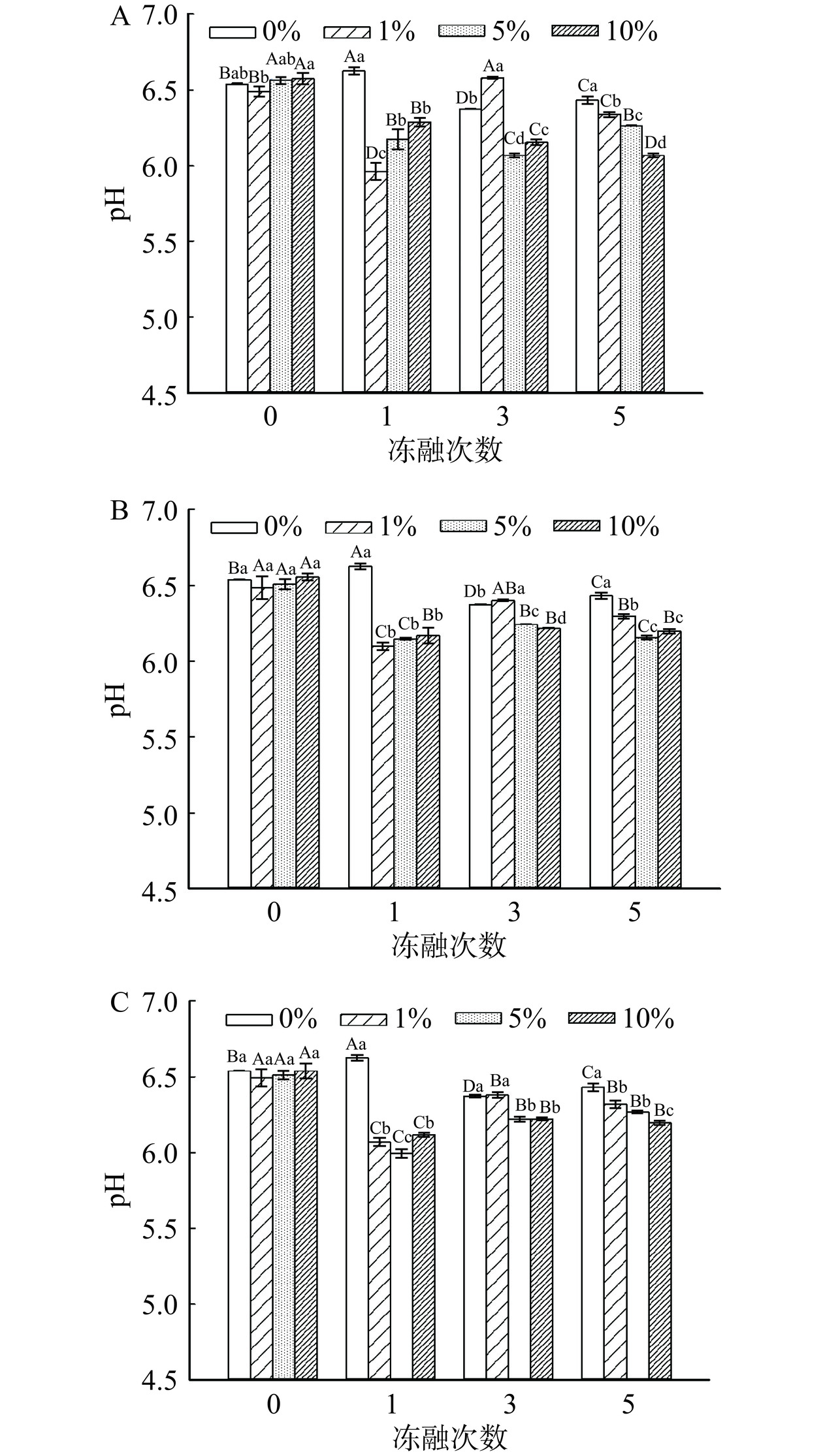

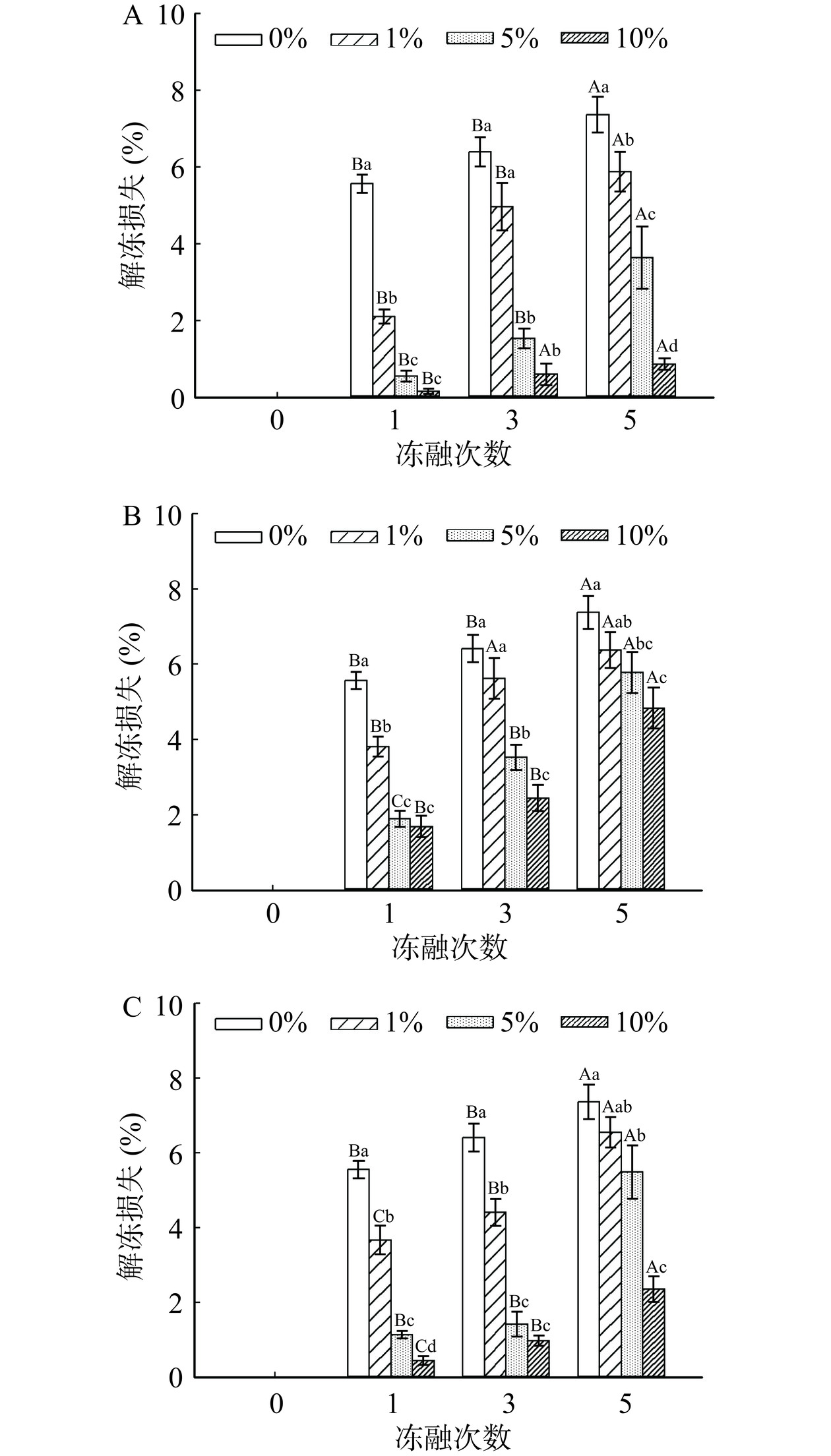
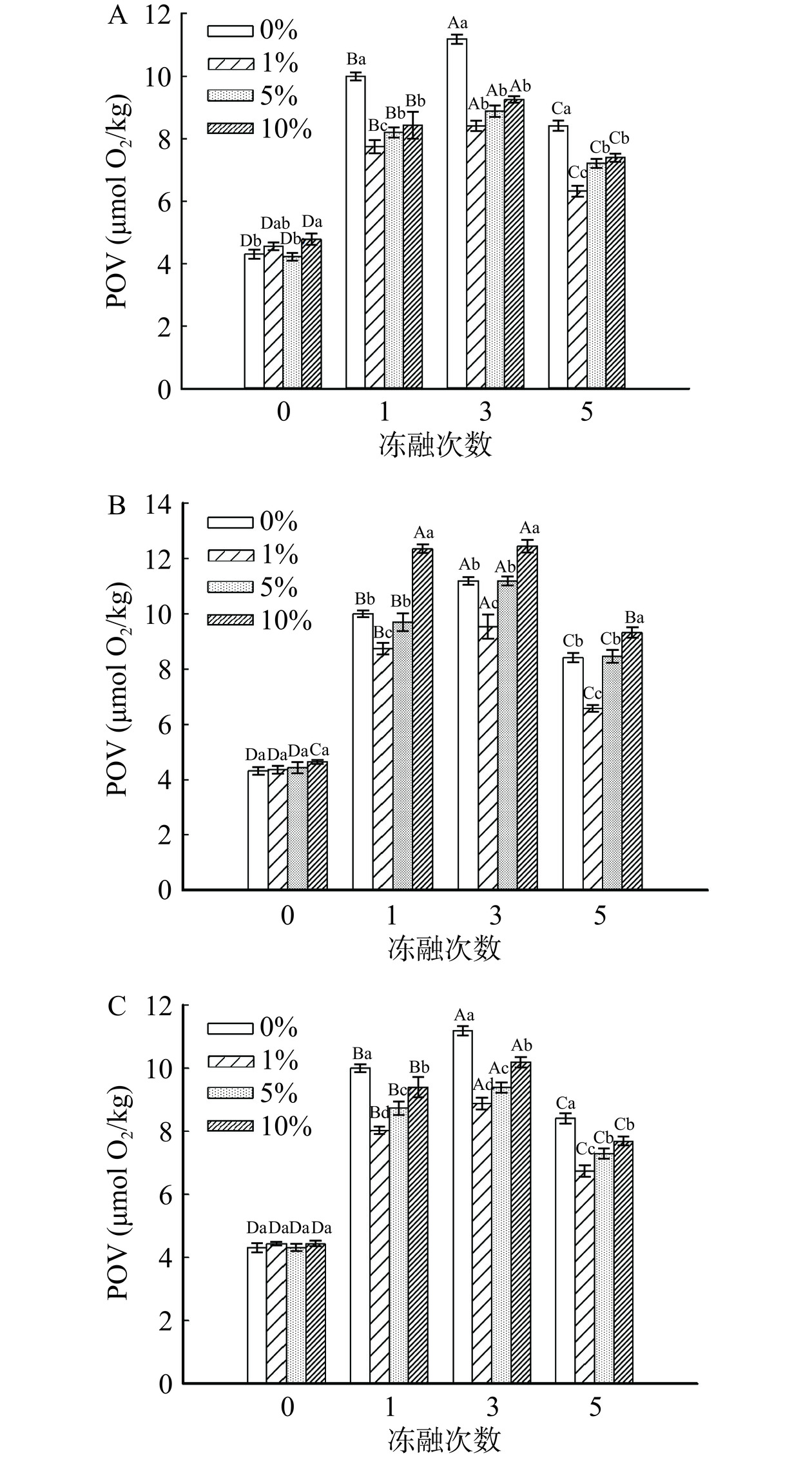


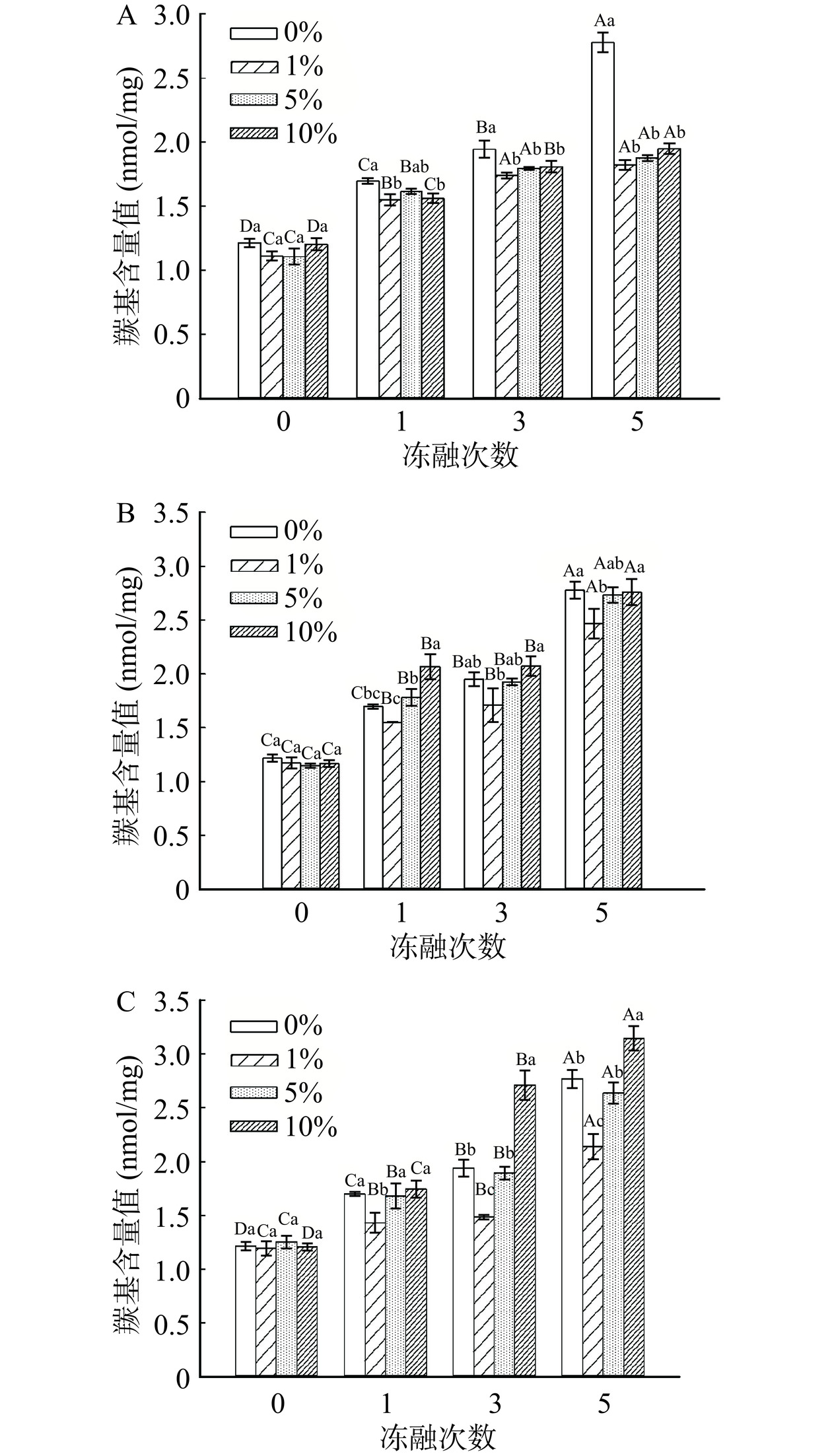

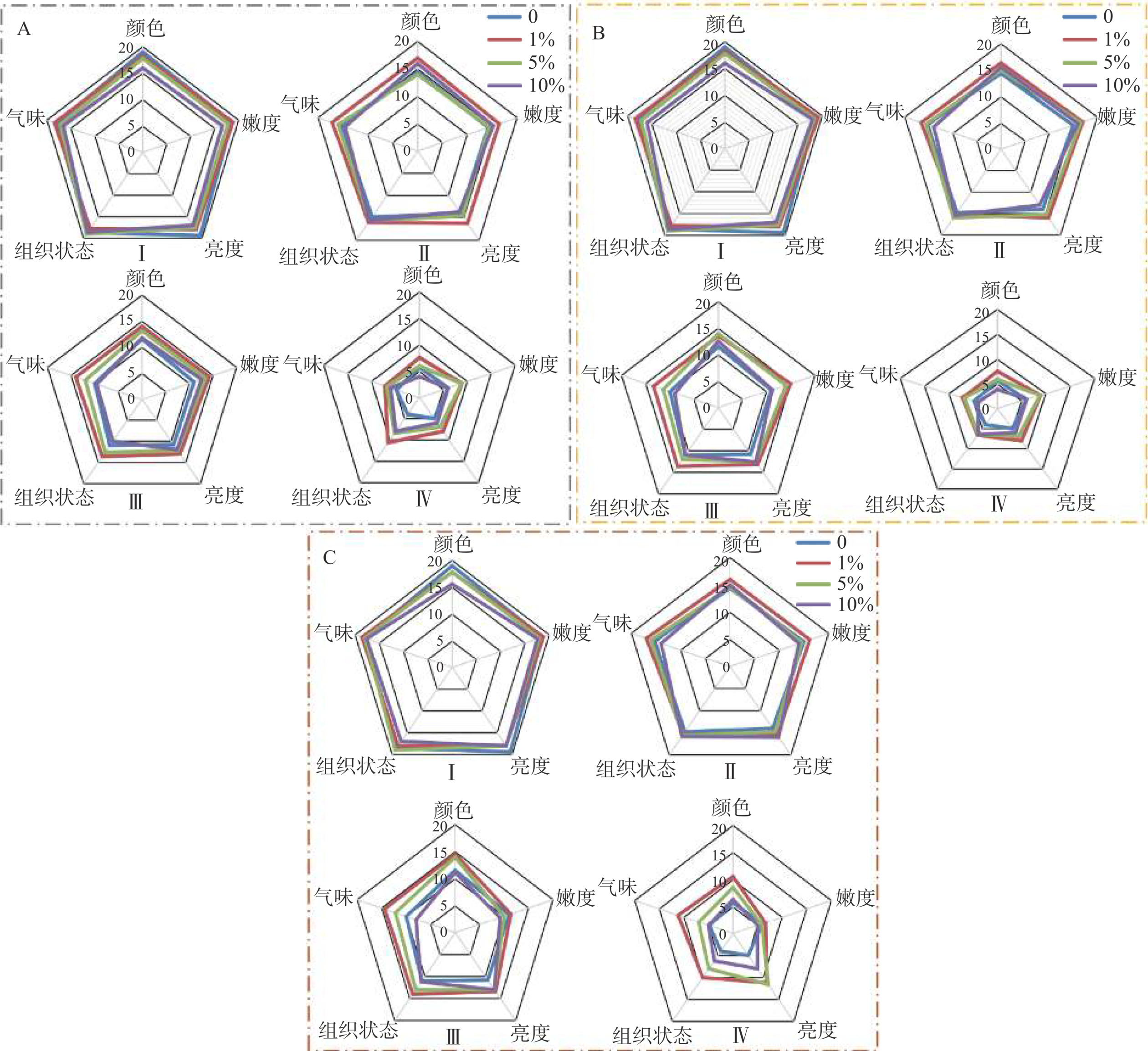
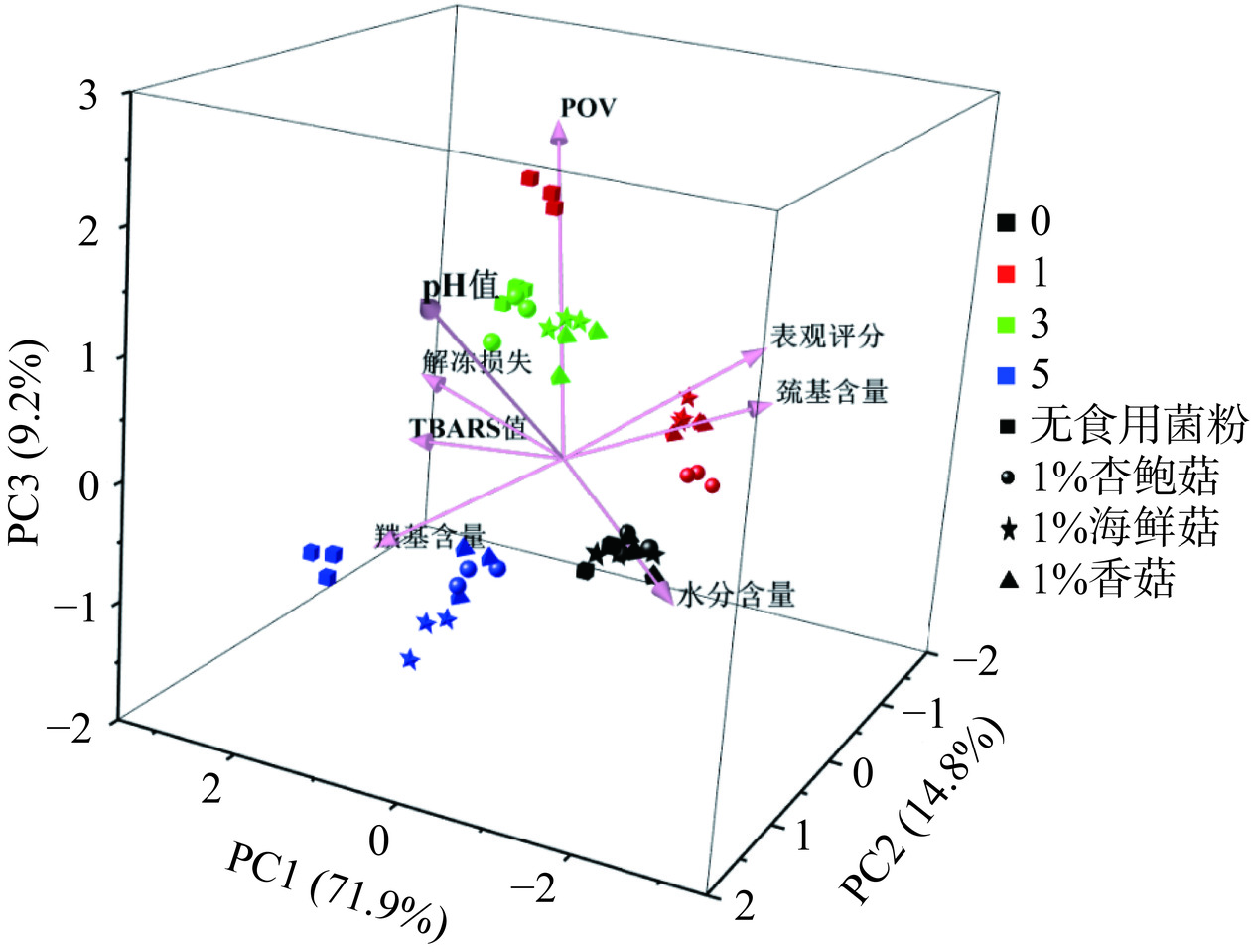
 下载:
下载:
